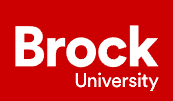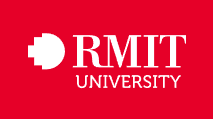A Comparative Study of Learner-centeredness in Communicative Language Teaching and Task-Based Language Teaching
DOI:
https://doi.org/10.63313/IJSSEH.9013Keywords:
Learner-centeredness, Communicative Language Teaching, Task-Based Lan-guage Teaching, Comparative StudyAbstract
This comparative study examines how Communicative Language Teaching (CLT) and Task-Based Language Teaching (TBLT) operationalize learner-centeredness in language education. Through analyzing teacher-student roles, instructional design, and assessment and feedback, the study reveals that CLT prioritizes scaffolded participation through structured activities, while TBLT emphasizes autonomous creation via authentic tasks. This study aims to explore how CLT and TBLT embody learner-centeredness in their methodologies. While both emphasize learner agency, they vary in teacher-student roles, instructional de-sign, and assessment and feedback. The pedagogical implications propose adaptability principles: matching CLT’s support to beginner proficiency, aligning TBLT’s tasks with advanced competencies, and contextualizing both approaches within Chinese educational realities. By advocating a flexible blend of methods tailored to learner levels, goals, and cultural settings, this study of-fers educators a framework to enhance student agency in diverse classrooms.
References
[1] Brown, H. D. (2004). Language assessment: Principles and classroom practices. Pearson Education.
[2] Ellis, R. (2003). Task-based language learning and teaching. Oxford University Press.
[3] Ellis, R. (2022). Task-based language teaching and second language acquisition. Annual Re-view of Applied Linguistics, 42, 150–170.
[4] Hymes, D. (1972). On communicative competence. In J. B. Pride & J. Holmes (Eds.), Socio-linguistics (pp. 269–293). Penguin.
[5] Lightbown, P. M., & Spada, N. (2013). How languages are learned (4th ed.). Oxford Univer-sity Press.
[6] Littlewood, W. (1981). Communicative language teaching: An introduction. Cambridge University Press.
[7] Nunan, D. (2004). Task-based language teaching. Cambridge University Press.
[8] Nunan, D. (2023,a). A synthesis of task-based language teaching research: 2000–2022. Language Teaching Research, 27(4), 567–589.
[9] Nunan, D. (2023,b). Assessment innovation in TBLT: Competency rubrics for real-world tasks. System, 115, 102987.
[10] Prabhu, N. S. (1987). Second language pedagogy. Oxford University Press.
[11] Rogers, C. R. (1969). Freedom to learn. Merrill.
[12] UNESCO. (2021). Reimagining our futures together: A new social contract for education. UNESCO.
[13] Vygotsky, L. S. (1978). Mind in society: The development of higher psychological process-es (M. Cole, V. John-Steiner, S. Scribner, & E. Souberman, Eds.). Harvard University Press.
[14] Willis, J. (1996). A framework for task-based learning. Longman.
[15] Cheng, X. T. (2021). Task-based language teaching: Theory and practice in China. Foreign Language Teaching and Research Press.
[16] Shu, D. F. (2023). New trends in foreign language teaching. Shanghai Foreign Language Ed-ucation Press.
[17] Wang, Q. (2020). Communicative language teaching theory and English classroom practice in China. Shanghai Foreign Language Education Press.
[18] Wang, Q. (2022). A study on formative assessment in communicative language teaching. Foreign Language World, (4), 56–63.
[19] Ministry of Education of the People's Republic of China. (2020). English curriculum standards for senior high schools (2017 edition, 2020 revision). People's Education Press.
[20] Ministry of Education of the People's Republic of China. (2022). Compulsory education curriculum standards (2022 edition). People's Education Press.
Downloads
Published
Issue
Section
License
Copyright (c) 2025 by author(s) and Erytis Publishing Limited.

This work is licensed under a Creative Commons Attribution 4.0 International License.





















